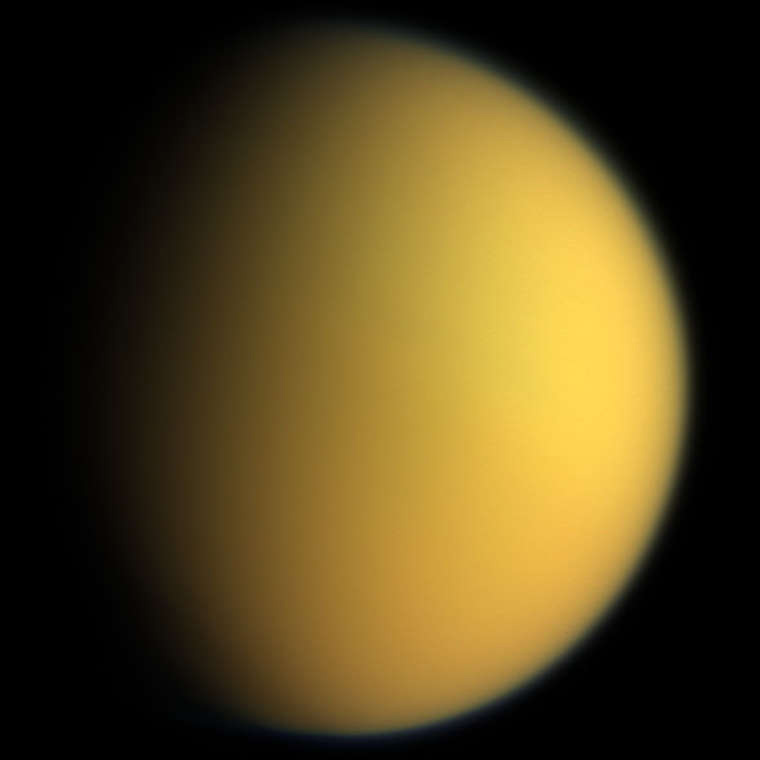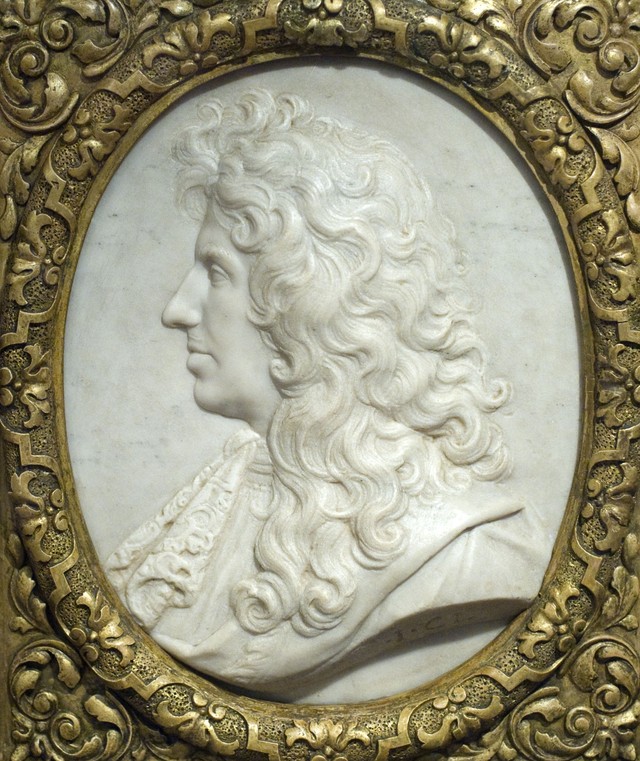March 25, 1655: Discovering Saturn's largest satellite is Titan
Christiaan Huygens was the first to discover the Titan satellite, but the name was set by another astronomer two centuries later.
Titan or Saturn VI is Saturn 's largest satellite, the only satellite known to have a special atmosphere, and the only object except Earth that has clear evidence of stable surface water bodies has been examined. break.
 Titan's natural colors are observed from the Cassini – Huygens spacecraft.
Titan's natural colors are observed from the Cassini – Huygens spacecraft.
Titan is a satellite at the distance of Saturn's twenty-second and farthest from the group of satellites of sufficient size to form a sphere. Often described as a satellite with planet-like characteristics, Titan has a diameter about 50% larger than the Earth's Moon and has a mass greater than 80%. It is the second largest satellite in the Solar System , behind Jupiter 's Ganymede satellite, and if measured by its diameter it is larger than the smallest planet, Mercury, (even with only half the mass). Titan is Saturn's first discovered satellite.
 Dutch astronomer Christiaan Huygens
Dutch astronomer Christiaan Huygens
Titan was discovered by Dutch astronomer Christiaan Huygens on March 25, 1655. Huygens was inspired by the discovery of four of Jupiter's largest satellites of Galileo in 1610 and his telescope improvements. Huygens himself has made technical improvements and his discovery of Titan has been " partly due to telescope quality and partly thanks to luck" . He gave it the simple name Saturni Luna (or Luna Saturni, Latin for "Moon of Saturn"), published the thesis De Saturni Luna Observatio Nova in 1655. After Giovanni Domenico Cassini published the His discovery of four other Saturnian satellites between 1673 and 1686, astronomers have a habit of calling those satellites and Titan is Saturn I to V (Titan is ranked fourth). . Other original names of Titan include " Saturn's normal Satellites ". Titan was officially numbered Saturn VI because after the 1789 discoveries the digital diagram was not used anymore to avoid confusion (Titan was numbered II and IV and VI). Since then many small satellites closer to Saturn's surface have been discovered.
Two centuries later, when John Herschel discovered Uranus and named seven Saturnian moons. At that time, Saturn's largest moon was named Titan, which meant it was immensely true to its properties compared to other moons.
- The hidden surface of Titan satellite's life
- There is liquid on Saturn's Titan satellite
- Summer clouds on Saturn's Titan satellite
- Announcing the first geological map on Saturn's Titan satellite
- The new discovery shook the hypothesis of life on Titan
- June 8: Titan Arum superhuman first hatches, discovering the brightest planet in the universe
- New computer model about Moon Titan
- Detecting signs of life on Saturn satellite
- Detecting Saturn satellite has the same smell as
- Capture the world's largest satellite image missing
- The largest moon of Saturn contains 1 layer of liquid water
- Discover many large seas on Saturn's Titan satellite
 Biography of hero Vu A Dinh
Biography of hero Vu A Dinh History of hematology
History of hematology Who is Mr. Tam Da 'Phuc-Loc-Tho' and what does it mean?
Who is Mr. Tam Da 'Phuc-Loc-Tho' and what does it mean? Unbelievable facts about the history of the oil and gas industry: Gasoline used to be cheaper than water, so abundant that it had to be dumped into the river...
Unbelievable facts about the history of the oil and gas industry: Gasoline used to be cheaper than water, so abundant that it had to be dumped into the river... NASA selects partners to explore Saturn's moon Titan
NASA selects partners to explore Saturn's moon Titan  3 hypotheses about the missing Titan submarine in the Atlantic Ocean
3 hypotheses about the missing Titan submarine in the Atlantic Ocean  Titan submarine crushed, 5 people on board died
Titan submarine crushed, 5 people on board died  If the Titans in 'Attack on Titan' Really Existed: Could Humanity Survive?
If the Titans in 'Attack on Titan' Really Existed: Could Humanity Survive?  Mysterious moon has hundreds of times more 'poisonous gas' than Earth: What if it catches on fire?
Mysterious moon has hundreds of times more 'poisonous gas' than Earth: What if it catches on fire?  Revealing an alien world with a landscape similar to Earth
Revealing an alien world with a landscape similar to Earth 